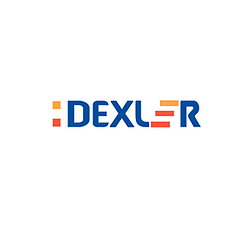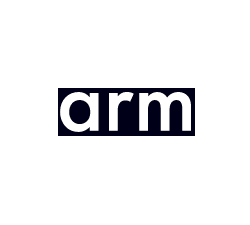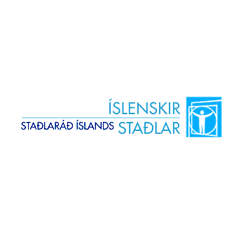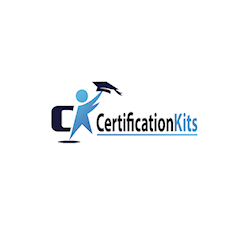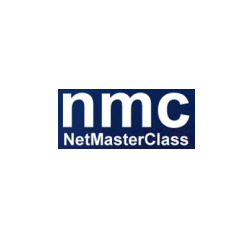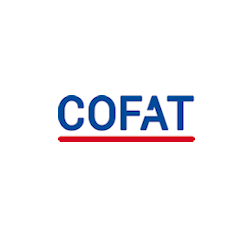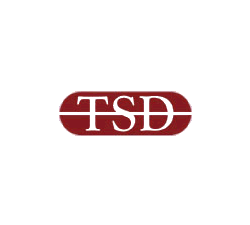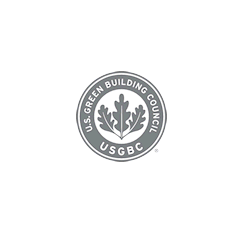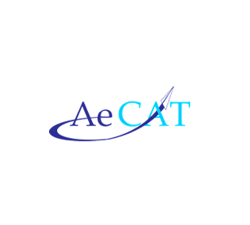![]()
PDF Security for Large Publishers: Sell Documents Securely, Stop Piracy

PDF DRM document security to protect ebooks, reports & training courses from piracy
Safeguard PDF Security can provide many benefits to large publishers including:
- Protecting ebooks, reports, magazines, training courses, etc.
- Subscription based services
- Highly configurable protection system
- Choice of server hosting arrangements
A large publisher is defined here as being anyone who is publishing one or more titles that appear daily, weekly or monthly, i.e. regular publications, and where their customers purchase subscriptions to publications that last for a period of time. These can be financial reports, weekly or monthly magazines, product documentation and updates and documentation.
A large publisher is also an enterprise with a large book list. If you are publishing a book list rather than periodicals or subscriptions the documentation for PDF security for small publishers may be more helpful.
If you sell subscription services, our unique concept of publications ensures minimum administration overheads and enables you to effortlessly manage your customer base. Time limited document expiry means your customers continue to pay license fees when they are due.
 Working with publications and documents
Working with publications and documents
A publication is a group of common documents – for example, a series of documents that make up a training course or a series of reports. By protecting documents to a publication you can save on administration and the assigning of document access – you only have to give users access to a publication rather than each individual document.
Before you secure a PDF document for publication you will allocate it to a publication in the administration system. This is to make sure that all your customers for that publication will be able to read it when they get their copy, without having any additional registration requirements.
The fact that you have allocated a document to a publication doesn’t mean that only customers buying the whole publication can view it. You can also allow customers to have one-off access to any documents that you have protected. And you can change the access rights that they receive from those given to people who have purchased the publication. So if you want to let them just read it for a week, you can make a one-off limitation for that, or requiring them to have to be online in order to read it at all. These may be useful techniques where you are trying to cross-sell publications across your customer base.
 Protect ebooks, magazines & reports
Protect ebooks, magazines & reports
If you sell ebooks, then likely you and your customer will expect that they can read it from now on. Your customer is not going to expect to suddenly not be able to read the ebooks they have purchased after a certain time period has passed. So most of the time you are just going to license a customer to read your information forever.
With magazines, reports and regular publications, customers expect to be able to read any document that they were entitled to during their subscription period and to read them forever after purchase. Like ebooks, you probably need to set the document expiry date to never so that people who have paid for a particular document can use it.
Although there are features in Safeguard PDF Security that allow you to suspend customers (and therefore revoke their access), it’s not likely that you will need to use them since most subscription services are paid for up-front.
 Measure and analyze customer usage
Measure and analyze customer usage
If you need to see how your documents are being used, or need report information, then try Safeguard Enterprise PDF DRM.
With Safeguard Enterprise you can log who viewed and/or printed your documents, when and where, and how many times.
You can generate user, document, publication, and system activity reports (e.g. list of users that can access document X, list of expired users, documents viewed/printed over the last month and by whom).
 Copyright Law
Copyright Law
Locklizard document DRM services are not configured to allow for concepts such as ‘fair use’ (unless you have a specific policy for allowing libraries access to your publications, perhaps) which would apply to published documents.
Also, Locklizard DRM has not been configured at this stage to allow for free access once your copyright in the work ends. Whilst we would like to be able to offer that service, it is not available at this stage and you should make appropriate arrangements to satisfy that requirement by another means.
 Using Command Line to automate Document Protection
Using Command Line to automate Document Protection
Command Line provides automated PDF protection. It allows an administrator to preset specific commands and have them run as DOS commands in the machine where the Writer is installed. Documents can be automatically secured using command line so that they are protected in a consistent manner inline with your document protection policies.
You can create batch files that non-Safeguard administrators can run, and/or have these run automatically against specific folders using Windows scheduler. Non-administrators can save files to these folders where they will be automatically protected with the document DRM controls you have specified.
Command line can significantly improve the automation of the system, prevent protection profile errors, devolve administrator responsibilities, and increase protection reliability for improved governance.
 Using E-commerce API to automate adding users & assigning access
Using E-commerce API to automate adding users & assigning access
A large publisher may have several reasons for utilising the eCommerce integration API:
- Connection to one or more sales web sites
This is probably the commonest use for any publisher, in order to automate online order fulfilment – granting access to secured PDF documents. Commands are available to add a customer and grant them access to documents, or to connect them to subscription services using the Locklizard publications concept. Publishers may also grant existing customers access to additional documents that they acquire (or are allocated) through the web site or as a result of external administrative processes. Licenses may be emailed to customers or fulfilled directly over the web link established with the customer during ordering. - Managing dynamically created documents
A number of major publishers allow their customers to design the document they wish to see dynamically. It is created out of many database content sources, and is often a unique production. The DMS is used to marshal document text as part of the assembly function before using the Command Line option to protect it as a new secured document. When it has the new Document ID it can be passed forwards to eCommerce to automatically link the new protected document to the customer. - Automating adding new documents to existing customers
There can be times when for marketing reasons a publisher can wish to distribute a ‘sample’ of an upcoming title, allowing existing customers a ‘sneak-peek’ perhaps for a number of reads or days. The eCommerce integration API allows a publisher to batch allocate access rights to a document(s) protected for this purpose, and, if needed, cancel access after a fixed period of time. - Devolving user/customer administration
In larger administration environments it is not good practice to allow too many people to be systems administrators, because that role is very powerful and difficult to supervise. But by creating applications that interact with the eCommerce API, you can create tiers of lower level administrators who may be programmed to be able to add users, modify some of their attributes, but perhaps not be able to delete users, publications or documents. Such powers would simply not be exposed to them by the application, and the actual commands being issued would be effectively hidden. Rules built into the commands issued to the eCommerce API could be used to limit the role of these administrators, control access to the applications, and create activity logging entirely according to internal control requirements.
 Using Safeguard Portable USB to distribute offline documents – no Viewer installation required
Using Safeguard Portable USB to distribute offline documents – no Viewer installation required
A large publisher (and that would include academic bodies, museums and collections) may wish to be able to distribute a whole collection (or backlist) on a USB, and license the use of it piecemeal or in totality, as may be convenient. The licensing control is that whoever has the USB device (and they can hold quite a lot of information these days – 32Gb for example equates to around 9,000 average books) has use of the license(s) granted, but if they want to let someone else use a document they must give them the original USB, because that is what holds the license.
This can be a critical feature in many user environments. Nothing needs to be installed on the PC that loads the USB device to allow it to use granted licenses. So there are no licensing or installation complications. Nobody has to go and negotiate with corporate IT about administrative rights. The Viewer application can be updated automatically to the latest version without the need to install on the PC. The publisher is also able to add document licenses to the secure USB device, and to license secured documents that can be downloaded onto the secure USB so they can be subsequently be licensed, without allowing them to be used unless they are on the secure USB device.
Other scenarios that this feature can be used in include distribution of conference documentation – it is accessible to all those it is distributed to, but to nobody else. It can be used offline – ideal for those who often work outside regular WiFi coverage because they travel a lot, or because policy is not to connect to untrusted networks, or because they want to be able to use whatever machine happens to be available, and not just their own PC.
So Safeguard Portable USB offers many interesting and useful advantages for the large publisher.
 Using Web Publisher to distribute documents via a web portal – no Viewer installation required
Using Web Publisher to distribute documents via a web portal – no Viewer installation required
Safeguard Web publisher allows anyone using one of the major browsers (IE, Firefox, Google Chrome and so on) to access secured documents using nothing more than an ID/password combination. This means that users/customers are able to access documents from almost any location (they must be online for this to work) and with any suitable browser. This gives the ultimate in flexibility for document delivery and means that users are able to start using documents almost immediately.
Unlike the Locklizard installed viewers, users must be connected to the Internet to open documents and use them. The documents are not downloaded in full into the browser, but in ‘chunks’ using different encryption keys for each chunk. This helps resist attack against the documents. But it means documents cannot be stored locally and cannot be used offline.
Although using this technique you cannot prevent users from giving their ID/password to other users (a common security concern with secure data rooms), you can insure only one person at a time can use the account (only one active current login allowed per user account). This makes it very inconvenient for the original user as they cannot guarantee to be able to use the account, and if the password is changed the others get locked out instead. You can also lock users to country and IP locations to further enhance security.
 Hosting of the Administration system
Hosting of the Administration system
As a large publisher the choice to host the Locklizard administration system is purely down to your individual needs.
By hosting on your own server, the server is under your control. You can choose the port numbers the Secure PDF Viewer software will communicate on and you can use your own scripts to manipulate the database (please note that Locklizard does not provide support services for your own code). The administration system can be hosted on a server that is currently in use by other software applications or you can host it on a server on its own. It does not have to be connected to the Internet so you can have a completely closed system if you are just looking for an internal system.
By using the Locklizard hosted administration system for the licensing of your customers you can be up and running straight away and don’t have the responsibility of looking after your own server.
All document protection is always done locally on your own computer so there are no uploading of unprotected files to the cloud regardless of what hosting option you decide to go with.









 Free Trial & Demo
Free Trial & Demo Working with publications and documents
Working with publications and documents Measure and analyze customer usage
Measure and analyze customer usage Copyright Law
Copyright Law Using Command Line to automate Document Protection
Using Command Line to automate Document Protection Using E-commerce API to automate adding users & assigning access
Using E-commerce API to automate adding users & assigning access Using Safeguard Portable USB to distribute offline documents – no Viewer installation required
Using Safeguard Portable USB to distribute offline documents – no Viewer installation required Using Web Publisher to distribute documents via a web portal – no Viewer installation required
Using Web Publisher to distribute documents via a web portal – no Viewer installation required Hosting of the Administration system
Hosting of the Administration system Company Own Branding
Company Own Branding